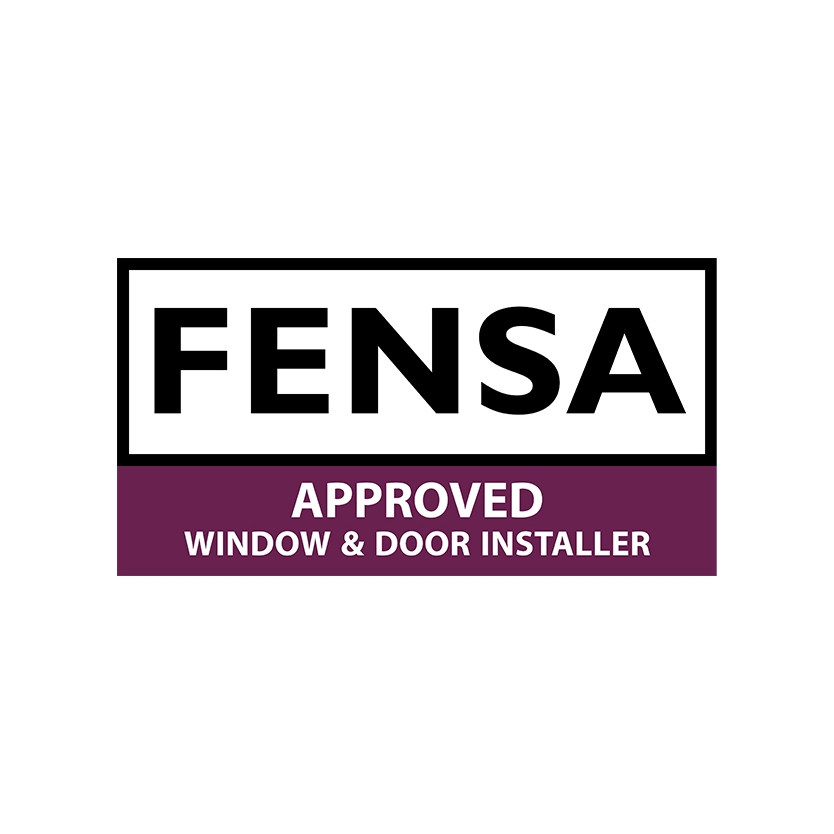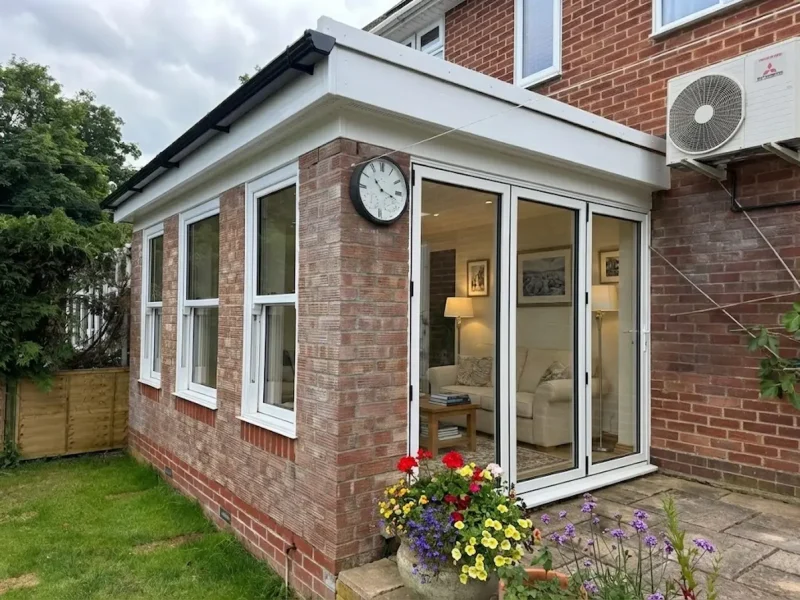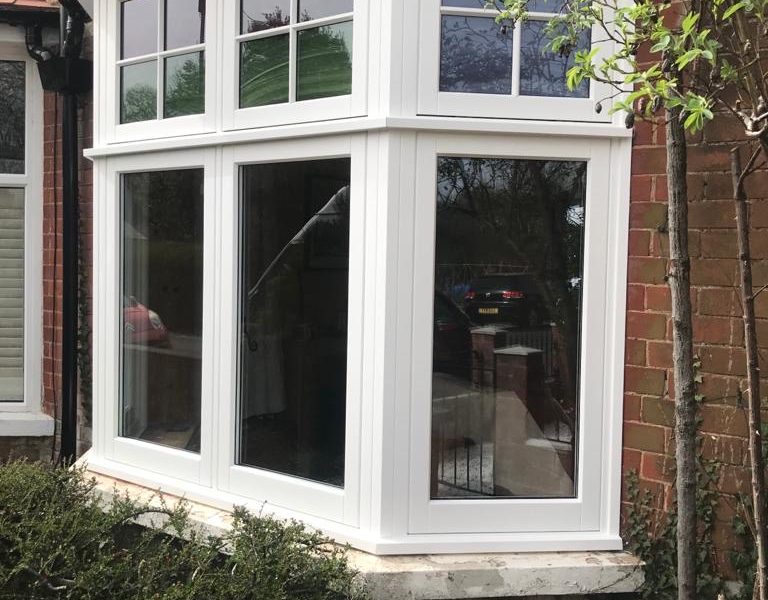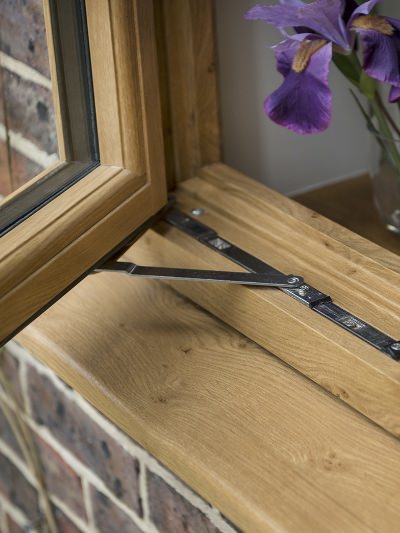
Timber - PVC - Aluminium - Windows, Doors & Conservatories in Hampshire
Graf PVCu Welded Windows and Doors: The Ultimate Guide to uPVC Joint Types
Graf PVCu Welded Windows and Doors: The Ultimate Guide to uPVC Joint Types
Category: Technology / Innovation
Reading Time: 5 Minutes
📌 Key Takeaways
- The “Ugly Groove”: Standard uPVC windows have a visible 3mm groove at the corner (sprue) which collects dirt.
- The Solution: Graf Welding forces the excess plastic internally, creating a completely smooth, invisible joint.
- Timber Look: This is the only way to make a uPVC window look truly like a wooden frame.
- Availability: This technology is rare due to machinery costs, but available at KJM via the Infinity range.
For decades, uPVC windows have had a tell-tale sign that revealed they weren’t timber: the corner joint.
If you look closely at a standard uPVC window, you will see a small groove (approx 3-4mm wide) running diagonally across the corner weld. This is where the excess plastic was “knifed” off during manufacturing.
But technology has moved on. Enter the Graf Weld—a seamless manufacturing technique that is revolutionising the window industry.
Table of Contents
1. The Standard 45° Mitre Weld (The Old Way)
This is the starting point for the vast majority of PVC-U windows made in the UK today. The principles of manufacture are similar to timber: the ends are cut at 45° and melted together.
However, pushing molten plastic together creates a “mess” (sprue). To clean this up, a machine cuts a shallow groove into the corner.
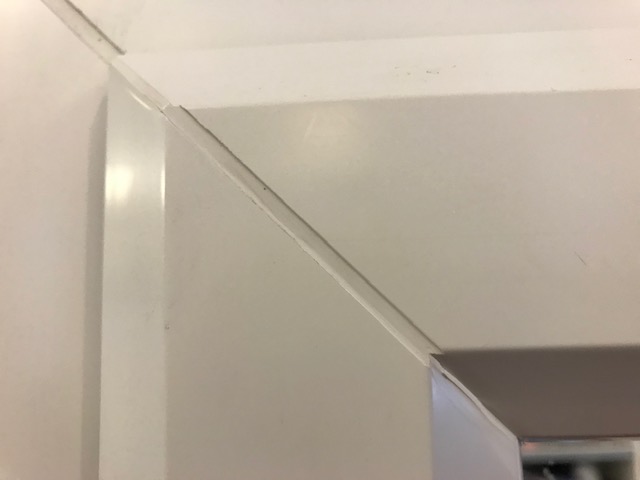
The Downside: That tiny groove is a magnet for dust, moss, and grit. On coloured (foiled) windows, this groove cuts through the foil, revealing the white plastic underneath, which often has to be coloured in with a touch-up pen.
2. The Seamless Graf Weld (The New Way)
If you are detail-focused, this is the upgrade you need. Graf welding (or “zip-welding”) uses cutting-edge machinery to reverse the process.
This technology was pioneered by Graf Synergy, an engineering firm that revolutionised how uPVC corners are joined.
Instead of letting the molten plastic spill out, the V-Perfect machine pushes the excess material back inside the hollow chambers of the frame. The result is a perfectly smooth, flat corner with absolutely no groove.
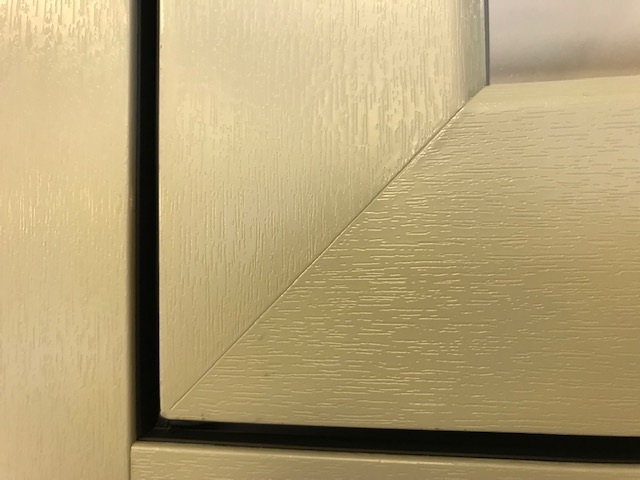
🛠 Why isn’t everyone doing it?
Simple: Cost. A Graf welding machine is a massive investment compared to a standard welder. KJM Group partners with premium suppliers (like Deceuninck) who have invested millions in this technology to bring you the Infinity Window Range.
Comparison: Standard vs. Graf Weld
See the difference for yourself:
| Feature | Standard “Knifed” Weld | Graf “Seamless” Weld |
|---|---|---|
| Visual Finish | Visible 3mm groove (ditch) at the corner. | Completely flat and smooth. |
| Timber Authenticity | Looks clearly like manufactured plastic. | Mimics a sanded timber joint. |
| Maintenance | Groove collects dirt/algae. Hard to wipe. | Wipe-clean surface. No dirt traps. |
3. Seamless Bay Window Cills
If you can’t quite stretch to Graf seamless welds on every window, a smart compromise is to focus on your Bay Window cills.
Traditionally, bay cills are welded and then polished by hand, often leaving a visible join line. However, Graf has developed a “Seamless Sill Welder” which provides that same exquisite, high-precision finish to the cill—the part of the window you look at most often.
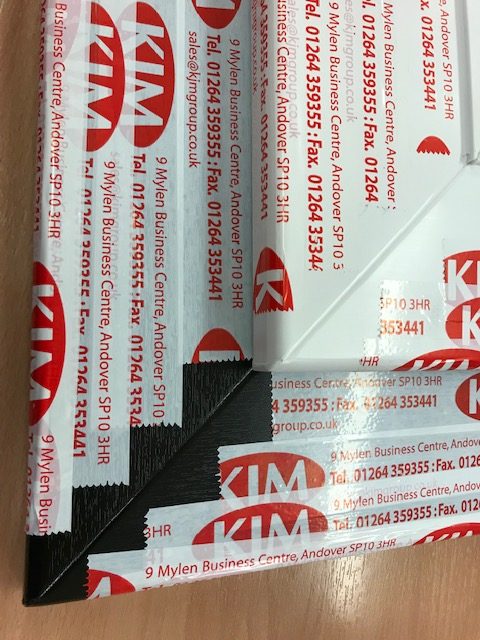
4. Mechanical Joints (The Heritage Alternative)
Finally, there is a third option: Mechanical Joints. These are not welded at all. Instead, they are screwed and glued together, exactly like a traditional timber frame.
This is most common on our Residence 9 (R9) collection, designed to replicate 19th-century butt-jointed timber windows.
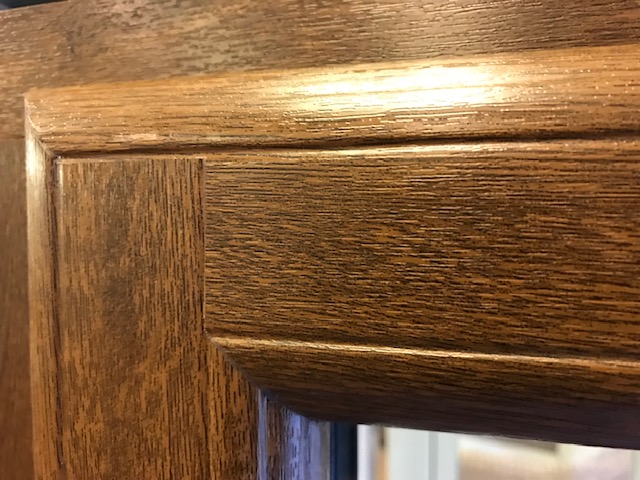
Frequently Asked Questions
They are equally as strong. Both methods result in a “homogenous” joint, meaning the plastic is physically fused together into one solid piece. The difference is purely aesthetic (how it looks) and practical (how easy it is to clean), rather than structural.
There is a small premium for Graf welded frames (such as our Infinity range) due to the specialized manufacturing process. However, for homeowners looking for a high-end finish that mimics timber or aluminium, the cost difference is often negligible compared to the visual improvement.
Absolutely. You cannot truly appreciate the difference until you run your finger over the corner. We have samples of both standard welds and the seamless Infinity Graf weld in our Andover Showroom.
Explore Our Window Hub
Compare specific products and costs:
- 2026 Design Trends: The 4 Window & Door Styles Defining the Year - 19 December 2025
- The 2026 Glazing Outlook” – High-level summary of the pivot to growth. - 9 December 2025
- Industry News: The Future Homes Standard 2025 & What It Means for Your Windows - 1 December 2025

